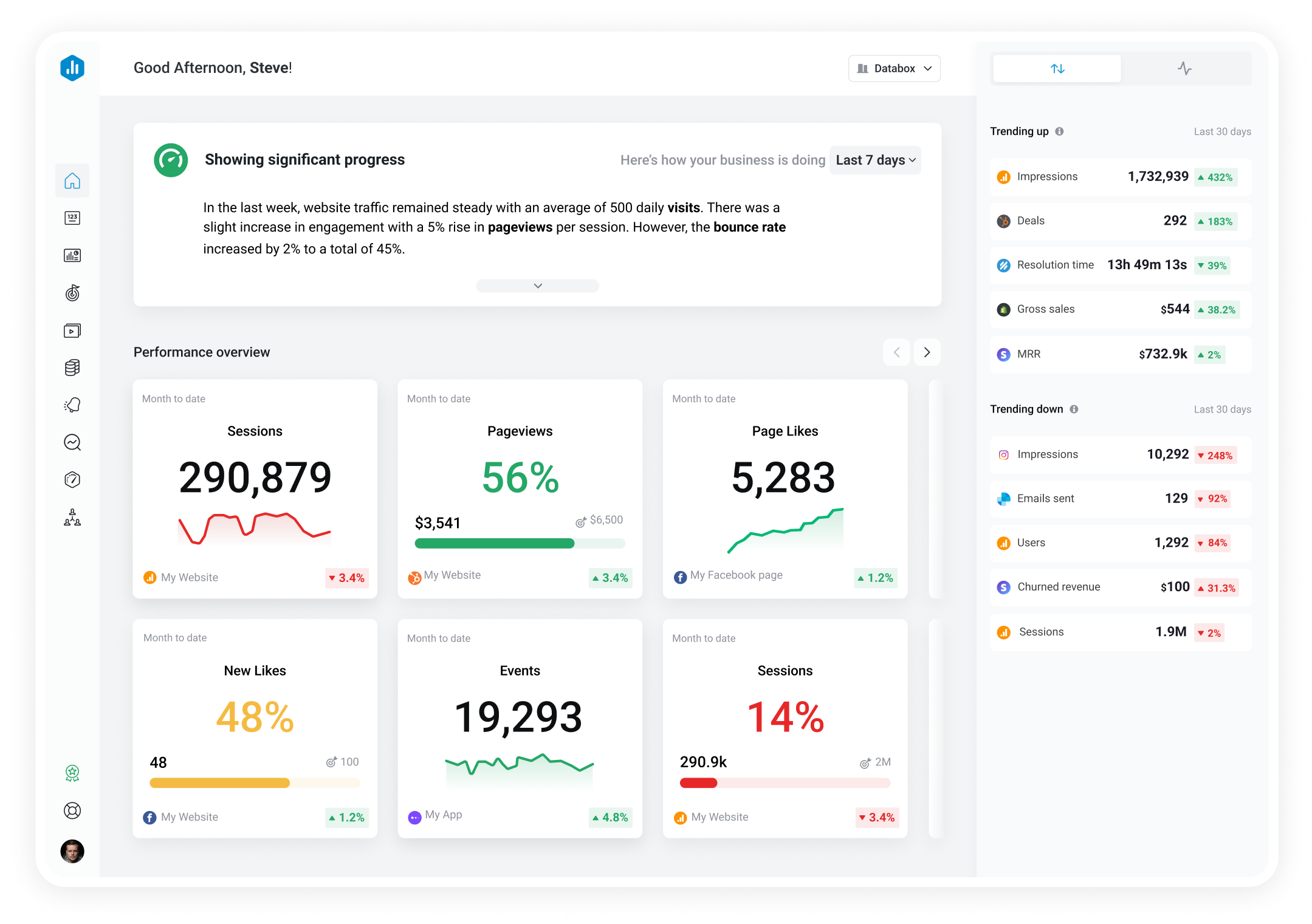Track all of your key business metrics from one screen
GET STARTED
 Stripe
MRR (excl. Canceled Subscriptions)
Stripe
MRR (excl. Canceled Subscriptions) MRR (excl. Canceled Subscriptions) stands for Monthly Recurring Revenue excluding Canceled Subscriptions, a metric that shows the predictable monthly revenue generated by a subscription-based business model excluding canceled subscriptions. It includes all recurring charges and allows businesses to monitor customer retention and growth.
With Databox you can track all your metrics from various data sources in one place.
Monthly Recurring Revenue (MRR) metric is the predictable and recurring revenue that a business generates on a monthly basis.
It’s used primarily by businesses that operate on a subscription-based model, and it provides key insights into revenue trends, customer retention, stability, and overall business performance.
To calculate your MRR, you need to sum up the monthly revenue your business generates from active subscriptions.
In the broadest sense, the formula is basically:
MRR = Total Revenue from Active Subscriptions in a Month
To get even more granular, you need to consider your specific type of subscription-based business model.
For example, let’s say you’re a SaaS company that implements a tiered pricing system and offers three subscription plans:
To calculate MRR for this month, you would multiply the number of subscribers in each plan by their corresponding monthly price and then sum up the results.
MRR = (Basic plan revenue) + (Standard plan revenue) + (Premium plan revenue)
Following this formula, we find that the MRR for the month is $6,250.
There are several factors that determine a business’s MRR growth rate, such as industry, specific pricing model, and market conditions. Because of this, there is no universally good benchmark.
However, we can take a look at some general numbers related to the stage of your SaaS company:
If you’re currently seeing lower numbers in your own business, it doesn’t necessarily mean that your performance isn’t good. Make sure to consider all factors.
Aiming for consistent, healthy growth is key and it’s how you ensure that the business remains financially stable.
To consistently increase your business’s monthly recurring revenue, you need to stay on top of new strategies and constantly test different approaches.
But after a while, finding fresh strategies that can move the needle only gets harder.
That’s why we compiled a few methods based on our surveys with hundreds of leading industry experts that you can try out:
More resources to help you improve:

Used to show a simple Metric or to draw attention to one key number.

Used to illustrate numerical proportions through the size of the slices.

Used to show comparisons between values.
Databox is a business analytics software that allows you to track and visualize your most important metrics from any data source in one centralized platform.
To track MRR (excl. Canceled Subscriptions) using Databox, follow these steps:
 Goals
Goals Scorecards
Scorecards Metric Digest
Metric Digest Metric Builder
Metric Builder Data Calculations
Data Calculations Performance Screen
Performance ScreenThe Stripe MRR + Churn dashboard template helps you monitor your churn rate and track the growth of MRR. It ensures you are retaining customers as you acquire new ones.

This report is designed for SaaS leaders, providing in-depth analysis of MRR, customer churn, and revenue growth metrics. This dynamic overview integrates key performance indicators such as ARPU, LTV, customer retention, and MRR breakdowns.

MRR is one of the key metrics businesses should track because it provides a clear and predictable measure of your revenue stream.
It helps you understand the financial health of your business over time and you can use it to identify growth trends, measure the success of your sales and marketing efforts, and make informed decisions about resource allocation.
Some of the main types of MRR include:
New MRR: The revenue generated from new customers who have subscribed to your product.
Expansion MRR: Additional revenue generated from existing customers who have upgraded their subscriptions.
Churned MRR: The lost revenue due to customer cancellations or downgrades.
Reactivation MRR: The revenue generated from customers who had previously churned or canceled their subscriptions but have returned and reactivated their accounts.
Depending on your specific business model, you can get even more granular with your MRR segmentation.
